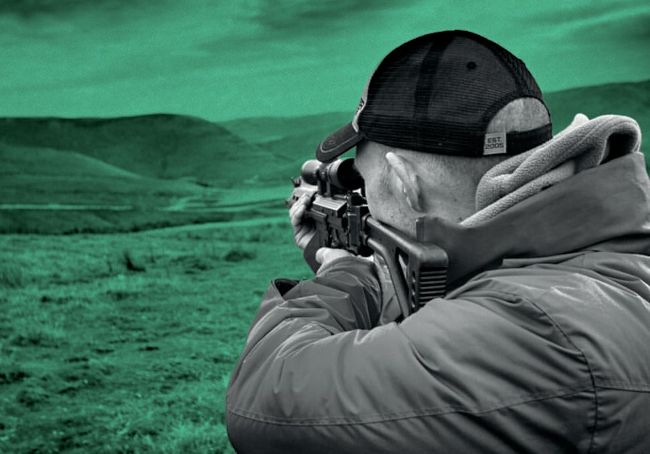MAXIMUM EFFECTIVE RANGE
The maximum effective range of a rifle has been a hotly debated topic for many years. Many of us will have seen such posts on internet forums. One person being mocked for their suggestion that their .308Win is only good for 800m. Another called out for being a liar because their claim of 2000m seems absurd! In truth they may both be right and it comes down to how we define “max range” and the context around it. Paul Bradley explains…

Most people assume that max effective range is a fixed variable, this could not be further from the truth. There are many definitions, maybe even endless! The most common factor that is given to define max range is the transonic zone. The point at which projectile velocity has decayed to drop below the speed of sound, which in itself can vary based on environmental factors. For this article we can assume it is 343m/s. When projectiles drop below this velocity they can become unstable, making predictable point of impact much more difficult. This is why many consider the transonic zone to be “maximum effective range”. The point at which a projectile hits the transonic zone is also variable. The weight, form factor, initial muzzle velocity, stability and environmental factors will all play a part in the calculation. A max effective range for a caliber then becomes somewhat of a generic claim. The transonic may be anywhere between 700m and 1000m depending on your choice of projectile and the other variables mentioned. To make matters even more confusing there are many projectiles which are far less effected by instability through the transonic zone. You are able to compute point of impact quite accurately. In these cases the use of transonic to denote max effective range would seem somewhat limiting.
So if the transonic zone is an unreliable measure of max effective range what else could we use? The defence sector has a pretty good option which is hit probability. The user group will define a target size and then select a percentage of hit probability that they would deem acceptable. The issue here is that there is huge variation dependant on the user group and what they define as acceptable. Green army units may accept a 50 percent ratio of rounds on target to be okay. A Police marksman unit would never accept that, too much liability at stake. They would likely seek between 90-100 percent as an acceptable hit probability. Both groups may use the same rifle, ammunition and equipment but have a completely different measure of max effective range. A target could be defined as something as small as a torso to as large as the side of a vehicle (something commonly seen for AP requirements).
We are obviously no nearer to defining any exact figures. So maybe we should take a look at the most extreme end of the max effective range spectrum for an answer – the extreme long range shooting community. These guys are pushing calibers to the limit, sometimes shooting over 7000 yards! However, the setup and time involved may present us with a conundrum in terms of answering our question. We will commonly see a rifle pitched at an elevation more commonly attributed to artillery pieces. Specialist scope mounts or optical devices, video cameras and spotters placed strategically down range. And finally many shots fired in order to land one on a very large target board with all the terminal energy of a pea shooter. Although these events are no doubt technically impressive, one could not really describe them as “effective”. They are certainly not easily repeatable from one day to the next. They may be nearer to a measure of maximum range based upon the maximum possible ordinate but that has little use beyond design of a range safety template.
The key to the answer is understanding what effective would mean? In this case even the target material is an important variable. While one may be able to hit a Deer at 1000m, what will the projectile do at such a range? Well it certainly won’t expand, which is vital for an ethical kill. The chance error at this range must also be a consideration, again relating to the ethics of the shot. Making holes in a piece of paper is a fairly common goal for most sporting shooters. The target material in these two instances may be a difference between an effective range of 300m through to one of 1200m.
For my own purposes I like to shoot steel plates that are 1 MOA in size. At 1000yds they will be roughly 10” and so on. When running the previously mentioned .308win rifle teamed up with a 175gn Norma Golden Target cartridge I can make consistent hits out to 1200m. After that, point of impact becomes a little bit unpredictable. That is where I define my own effective range in that particular system.
Hopefully, by now, you will have realised there is no fixed max effective range by caliber. As with most things in the ballistics world there are just to many variables to give a black/ white answer. If you need to define your own max effective range you must start by listing the variables relevant to your situation and defining what kind of hit probability you would find acceptable. Once you have that information you can use ballistic software or previously recorded data to work out what your max effective range should be.
We’d love to hear your thoughts on this topic. Email your views to editorial@twsgroup.com.